If you grow the 'hardy' or Japanese banana, it's worth giving them some winter protection in late autumn to ensure good growth next year, says RHS Garden Wisley's Alistair Penstone-Smith
The Japanese banana, Musa basjoo, is the most commonly-grown banana in the UK. With winter just around the corner it is really important to keep a close eye on the weather forecast, as you will need to have your bananas wrapped before the first hard frosts set in. It is therefore essential that you are well prepared and have all the necessary equipment at hand to protect your plants. Although bananas can tolerate a few minor frosts, the weather can be often quite unpredictable, and you might only have a short window before you need to protect them.
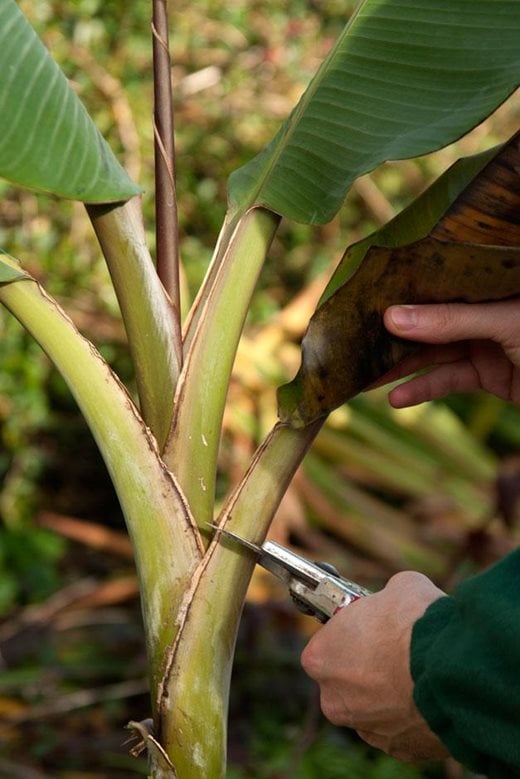
Step 1 - Remove the leaves
Straight after the first light frosts you will need to cut all the leaves off the banana just above the top of the stem. You may see that some of the foliage has blackened due to these light frosts, which will generally trigger the plant into dormancy.
It is important to use a sharp pair of secateurs and make a sloping cut away from the centre of the stem. This sloping cut will prevent any moisture from channelling into the stem of the plant and causing it to rot.
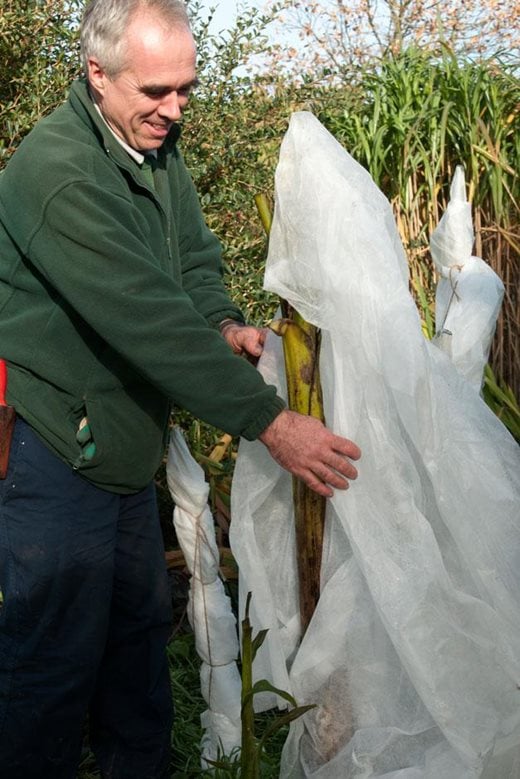 Step 2 - Wrap fleece around the plant
Step 2 - Wrap fleece around the plant
Wrap the whole plant with horticultural fleece ensuring that there are no exposed gaps.
Use garden twine to securely tie up the fleece, tightly enough that the fleece stays in place but not enough to damage the trunk of the banana.
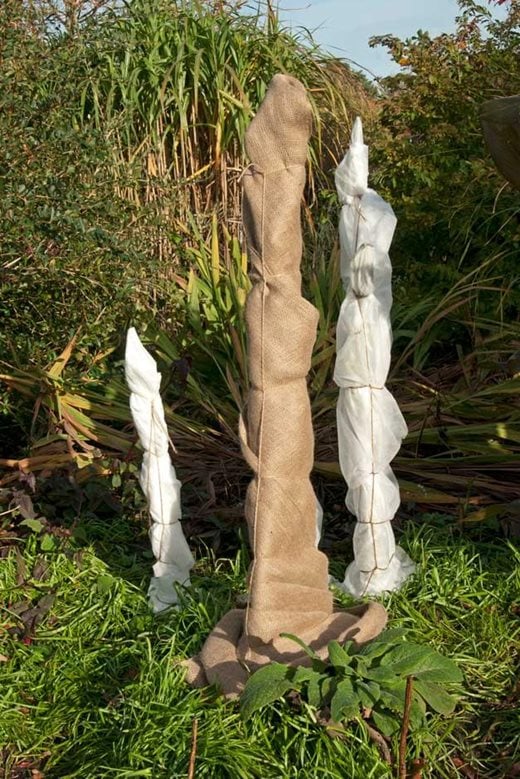 Step 3 - Wrap hessian around the fleece
Step 3 - Wrap hessian around the fleece
Another layer of hessian can be wrapped around the fleece and securely tied; this will offer even more protection.
It can be difficult to wrap this on your own and it may be necessary to have someone to offer an extra pair of hands. Fleece and hessian may be all that’s needed if the plant is in a sheltered spot.
Extra protection for cold areas
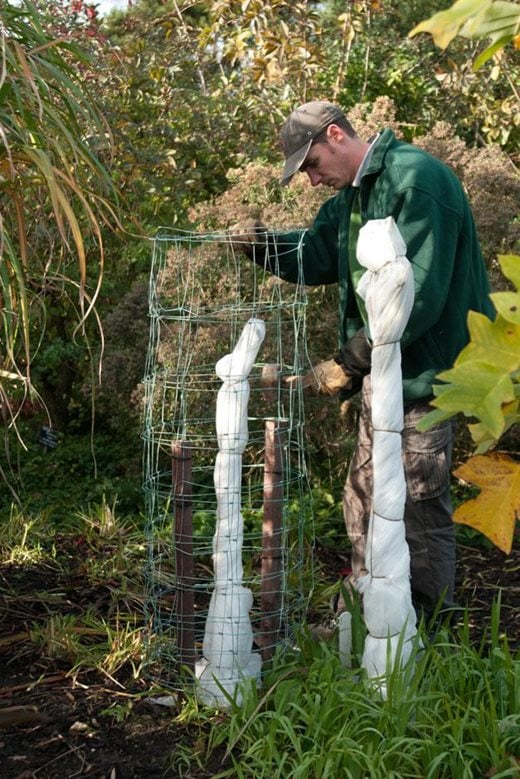 Step 4 - Erect a wire frame around the plant
Step 4 - Erect a wire frame around the plant
If you really want to ensure the plant's survival, another way to protect it would be to stretch a wire frame (chicken wire) around the trunk of the banana and secure this with two stakes which are hammered in on either side of the banana (taking care not to disturb the roots).
It’s important to wear thick gardening gloves while working on this part of the process as bits of metal and wire can easily scratch or even cut your hands. Ideally you should have a gap of around 15cm (6in) from the circumference of the wire to the tree trunk.
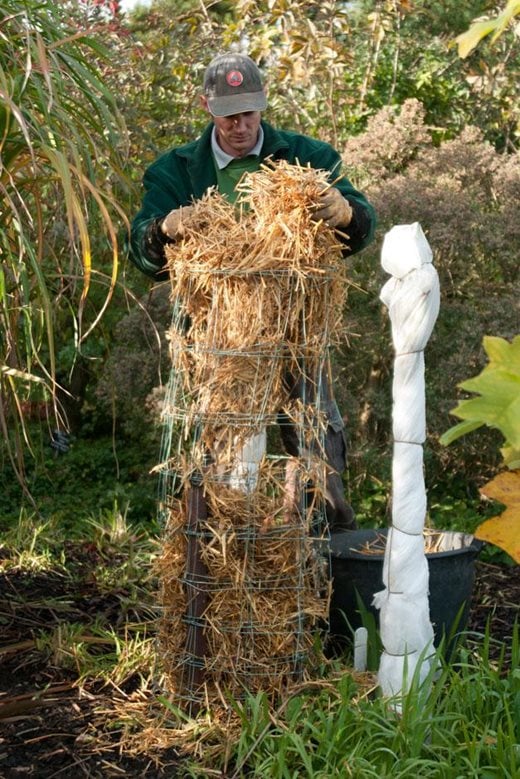
Step 5 - Pack the cage with straw
Fill the wire cage up with straw or dry bracken, packing it in quite tightly and being careful to surround the trunks completely without damaging them.
Continue filling the cage upwards until all the stems are well covered. The intention is to prevent rain, snow and ice from getting into the middle of the plant.
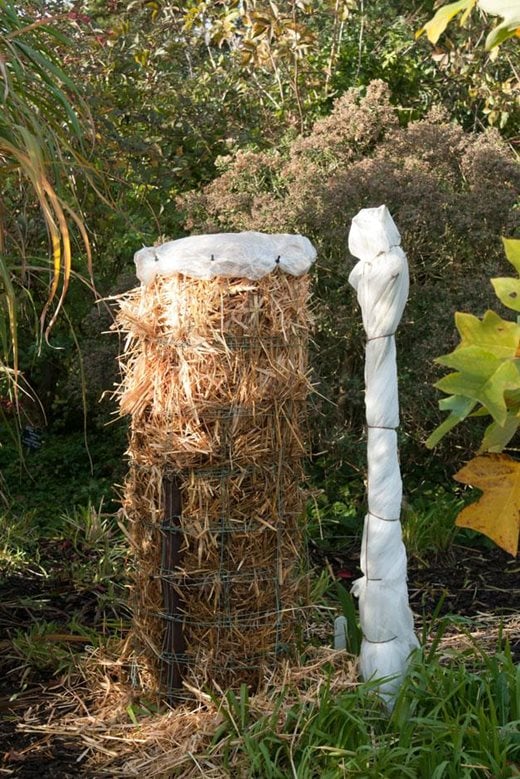
Step 6 - Fix a plastic cover over top
The last step of the process is to attach a polythene sheet over the top of the banana. Secure the plastic so that it does not blow away in the wind, this can be held in place using cable ties. This waterproof sheet will guarantee that no rain water will enter the structure.
Useful links
For more information on growing bananas, please see the RHS Advice page 'Bananas'.
Find suppliers of Musa basjoo.

